South Carolina is a state in the southeastern United States known for its subtropical beaches and marshlike sea islands. Despite its small size compared to some states, South Carolina is home to a wide variety of wildlife, including small rodents, spiders, mink, long-tailed weasels, birds, amphibians, reptiles, and insects.
South Carolina has three distinct geographical regions, the Blue Ridge mountains on the West, the eastern Atlantic coastal plain, and the central Piedmont region. It has varied weather conditions, including mild winters and hot, humid summers. The state is home to unusual and common creatures, predators, and herbivores; some of the rarest creatures in the nation are those that are seen and heard frequently.
Check out the list of 6 extinct animal species that used to live in South Carolina.
1. Eastern Cougar
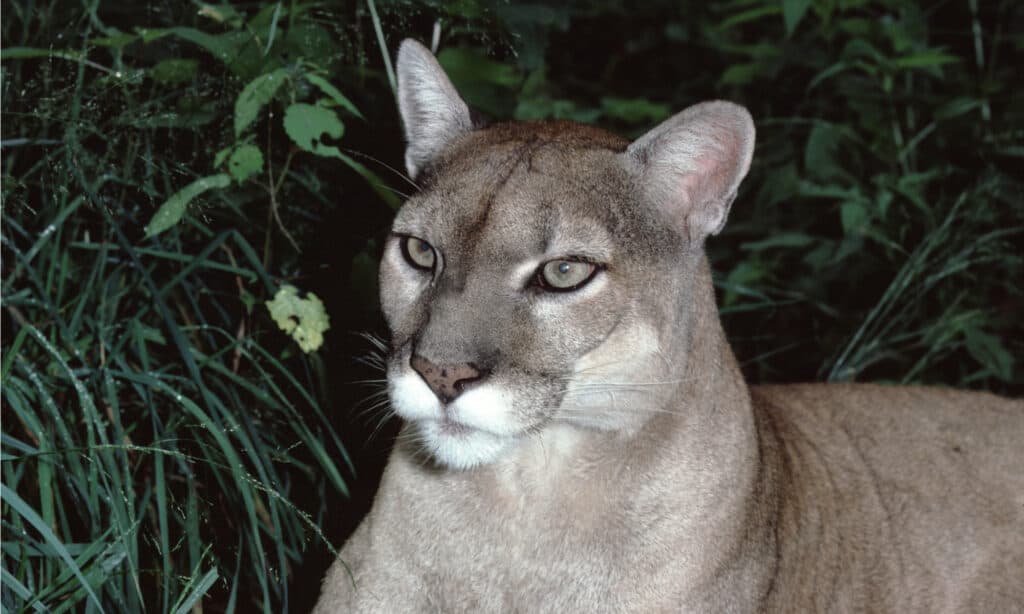
The eastern cougar was popularly known as puma or mountain
lion
.
©Liz Weber/Shutterstock.com
| Eastern Cougar | |
|---|---|
| Kingdom | Animalia |
| Phylum | Chordata |
| Class | Mammalia |
| Order | Carnivora |
| Family | Felidae |
| Subfamily | Felinae |
| Genus | Puma |
| Species | Puma concolor |
| Extinct since | 2011 |
The eastern cougar is a member of the big cat family. It was popularly known as puma or mountain lion. It was larger than the common mountain lion in the western states and was a tan-colored cat with dark brown spots on its back. Because of their size, it is easy for them to prey on deers, pigs, mammals, and other livestock. They were most common in the swamps and forests because of their “human-shy” nature. You could see them in the Southeast, although their range extended north from Massachusetts to South Carolina.
There are two reasons why the eastern cougar is extinct in South Carolina and the world. First, it was hunted almost to the point of extinction because of its value to the fur industry. Secondly, Eastern cougar shunted livestock, which became another reason men hunted them to protect their livestock.
2. Carolina Parakeet
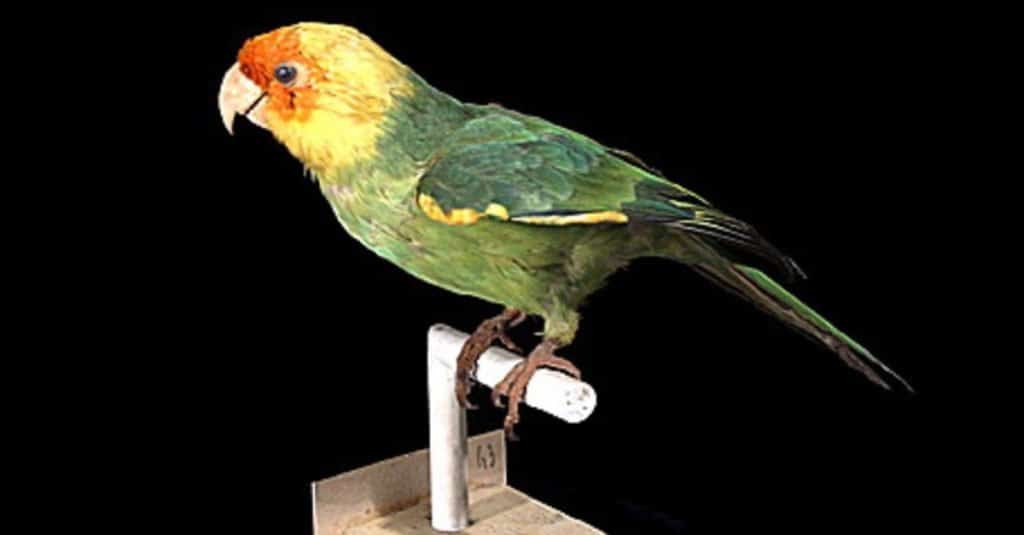
The Carolina
parakeet
in captivity died in the early 1900s.
©Naturalis Biodiversity Center / CC BY-SA 3.0 – License
| Carolina Parakeet | |
|---|---|
| Kingdom | Animalia |
| Phylum | Chordata |
| Class | Aves |
| Order | Psittaciformes |
| Family | Psittacidae |
| Subfamily | Psittacinae |
| Genus | Conuropsis |
| Species | Conuropsis carolinensis |
| Extinct since | 1939 |
The Carolina parakeet was a beautiful bird, prolific in the Carolinas, Georgia, Kentucky, New York, and various states in the United States. The Carolina parrot was a brightly colored bird with red, yellow, and green feathers. They were mostly green, with beautiful red feathers on the wing and yellow feathers under the wing.
The last one in captivity died in the early 1900s, and there have been a few attempts to bring it back to the wild, but they have not been successful.
3. Deinosuchus
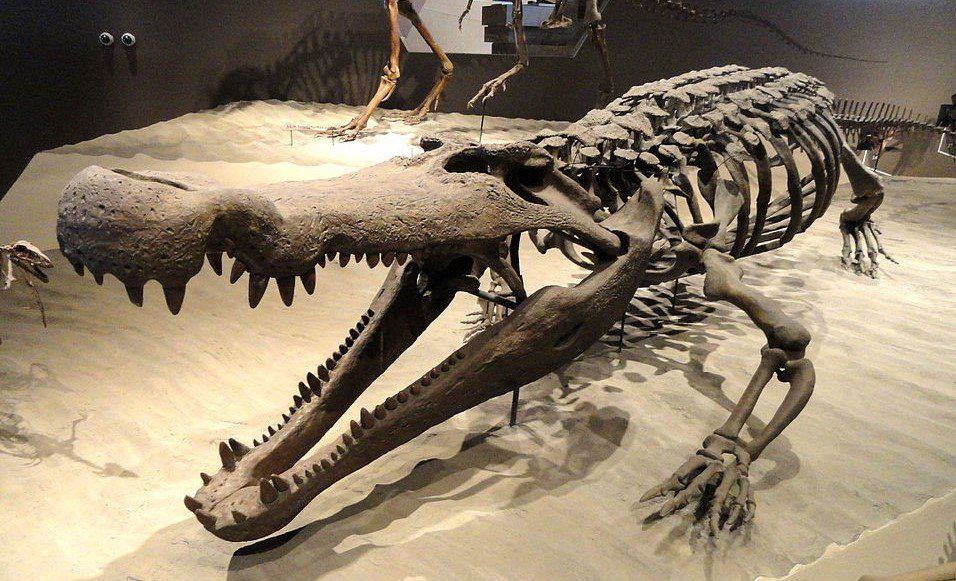
The Deinosuchus existed some million years ago.
©Daderot / CC0 1.0 – License
| Deinosuchus | |
|---|---|
| Kingdom | Animalia |
| Phylum | Chordata |
| Class | Reptilia |
| Order | Crocodilia |
| Superfamily | Alligatoroidea |
| Genus | Deinosuchus |
| Living period | 82 million to 73 million years ago |
The Deinosuchus is bigger than the biggest crocodiles currently in South Carolina. They existed some million years ago. The fossils collected so far have shown that they were giants and are the largest crocodiles that have ever existed. They have an approximate length of 35 feet, a height of 4 feet, and a width of about 5.6 feet. The appearance of the Deinosuchus was similar to the crocodiles we have in this era.
Fossils have been collected from South Carolina and Delaware recently, proving they existed in that part of the world. There are indications that these giant crocodiles died before the Cretaceous-Paleogene extinction event.
4. Ivory-Billed Woodpecker

The ivory-billed
woodpecker
was a large black and white bird.
©iStock.com/Nathan McDaniel
| Ivory-Billed Woodpecker | |
|---|---|
| Kingdom | Animalia |
| Phylum | Chordata |
| Class | Aves |
| Order | Piciformes |
| Family | Picidae |
| Genus | Campephilus |
| Species | Campephilus principalis |
| Extinct since | 1944 |
The ivory-billed woodpecker was a bird that lived in southern swamps, cypress forests, and wet hardwood forests. It was an iconic bird in the South, and even a few movies featured the bird. The ivory-billed woodpecker was a large black and white bird. It had a red patch on its back and a yellow patch on its breast. The male was larger than the female, and the female had less red on her back than the male. Although a decision has not been made about the nature of the bird, unfortunately, this beautiful bird is now extinct in the wild. The last sighting of the bird was in Louisiana in 1944.
The bird became extinct as a result of large-scale deforestation, bush burning, and hunting. There have been attempts to reintroduce the species and breed it in captivity, but so far, they have not been successful.
5. Saber-Toothed Tiger
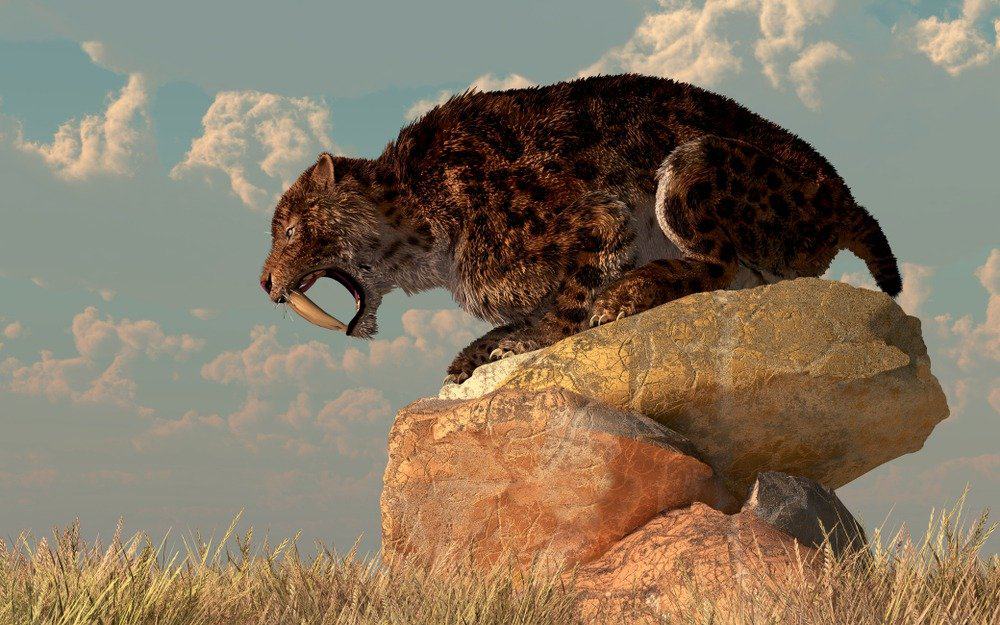
The saber-toothed
tiger
became extinct 10,000 years ago during the Quaternary extinction event.
©Daniel Eskridge/Shutterstock.com
| Saber-Toothed Tiger | |
|---|---|
| Kingdom | Animalia |
| Phylum | Chordata |
| Class | Mammalia |
| Order | Carnivora |
| Family | Felidae |
| Subfamily | Machairodontinae |
| Genus | Smilodon |
| Extinct since | 10,000 years ago |
The saber-toothed tiger, otherwise known as the smilodon, was a big cat with long canine teeth. The upper canines are 8 inches long and aid in tearing their prey and attacking other animals. These animals are about the same size as the modern-day lion, with a robustly built body structure and short limbs.
The saber-toothed tiger lived during the Pleistocene and can be found in Africa, North America, Europe, South America, and South Carolina. This big cat became extinct 10,000 years ago during the Quaternary extinction event. Some history authors have linked the saber-toothed tiger’s extinction to the competition between them and the faster felids that replaced them.
6. Woolly Mammoth
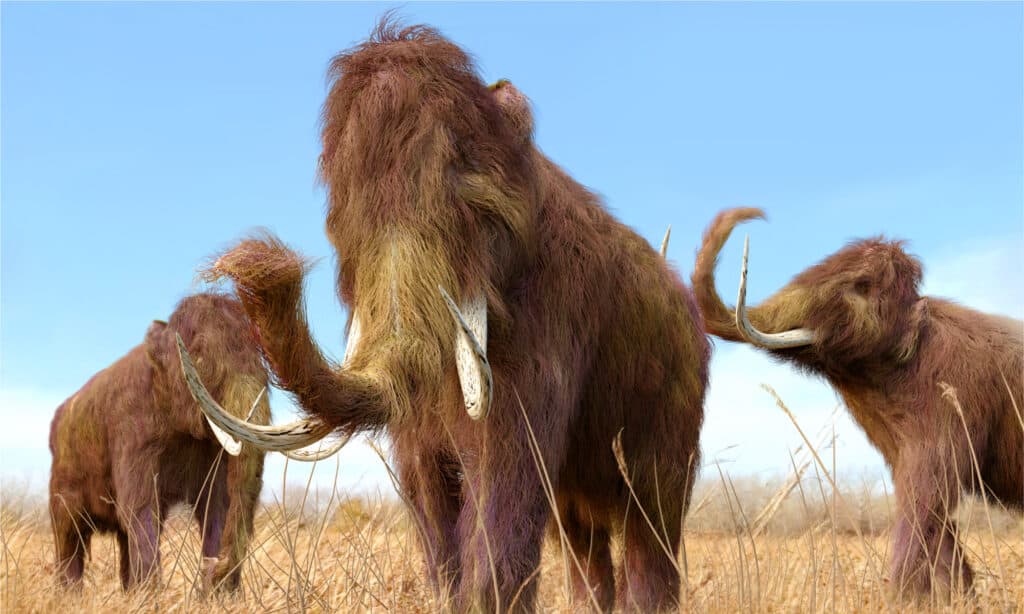
The woolly mammoth was also known as the
Siberian
mammoth or northern mammoth.
©Aunt Spray/Shutterstock.com
| Woolly Mammoth | |
|---|---|
| Kingdom | Animalia |
| Phylum | Chordata |
| Class | Mammalia |
| Order | Proboscidea |
| Family | Elephantidae |
| Genus | Mammuthus |
| Species | Mammuthus primigenius |
| Extinct since | 37,000 years ago |
The woolly mammoth was also known as the Siberian mammoth or northern mammoth. They were in existence from about 2.5 million years ago. Woolly mammoth, as the name might imply, was named woolly because of the thick layer of dark brown to yellowish-brown wool on the body of this giant elephant. This animal has an average height of about 11 feet and weighed about 12,000 pounds (6 tons).
Genetic studies of the remains of the animal in various places suggest that it lived in Europe, Asia, and North America. In 1725, some fossilized teeth were discovered on a plantation in South Carolina, which turned out to be part of the remains of a woolly mammoth.
The extinction of the woolly mammoth has been linked to the end of the ice age and global warming. The warmed environment was no longer suited for their existence, coupled with the fact that they were hunted on a large scale by humans.
Summary of 6 Extinct Animals That Lived in South Carolina
Here’s a recap of six extinct animals that lived in South Carolina that we took a look at:
| Number | Animal | Extinction Status |
|---|---|---|
| 1 | Eastern Cougar | Extinct since 2011 |
| 2 | Carolina Parakeet | Extinct since 1939 |
| 3 | Deinosuchus | Living period 82 million to 73 million years ago |
| 4 | Ivory-Billed Woodpecker | Extinct since 1944 |
| 5 | Saber-Toothed Tiger | Extinct since 10,000 years ago |
| 6 | Woolly Mammoth | Extinct since 37,000 years ago |
The photo featured at the top of this post is © Dotted Yeti/Shutterstock.com
Thank you for reading! Have some feedback for us? Contact the AZ Animals editorial team.






